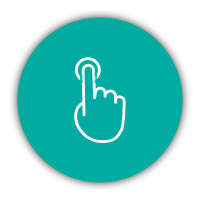How to track your progress without a scale
When it comes to measuring weight loss, numbers can be deceiving. While it’s ok to know where you are currently, relying solely on the scale is a mistake. Weight is not the tell all. You can have change in water and in muscle mass that can affect that number. Instead of obsessing over the scale, take the smarter approach by implementing these five ways to track your progress.
- Take Progress Pictures: As uncomfortable as it might be to snap a photo when you feel out of shape, knowing where you started is essential. Since you see yourself in the mirror daily, changes can be hard to see without your starting photos.
- Re-test Your Starting Points: Instead of relying solely on reducing numbers, try increasing them, in the form of weights. When you begin your fitness journey, take some time to test your starting points. How much can you press and pull? What do your squat numbers look like? By knowing your starting points, you’ll see how much progress you’ve made when you re-test later.
- Use a Tape Measure: Not all weight loss is fat loss. To see if you’re getting leaner, a tape measure can be a very effective tool. A few areas you might want to track are the chest, hips, waist, thighs, biceps, and shoulders.
- Measure Body Fat: Skin-fold measurements estimate body fat percentage based on the amount of fat you have lying right underneath the skin. There are many different ways to test this. However, using the same method every time and looking at the percentage-lost trend, rather than strictly at the number, can help you track your fat loss.
- Try on Your Old Clothing: Trying on old clothes can help you regain perspective. Maybe you didn’t hit that weight loss goal, but your old jeans no longer stay up. That’s progress!
By using these methods to measure your progress and broadening your view beyond the numbers, you’ll set yourself up for success, even when the scale’s numbers stay the same.





